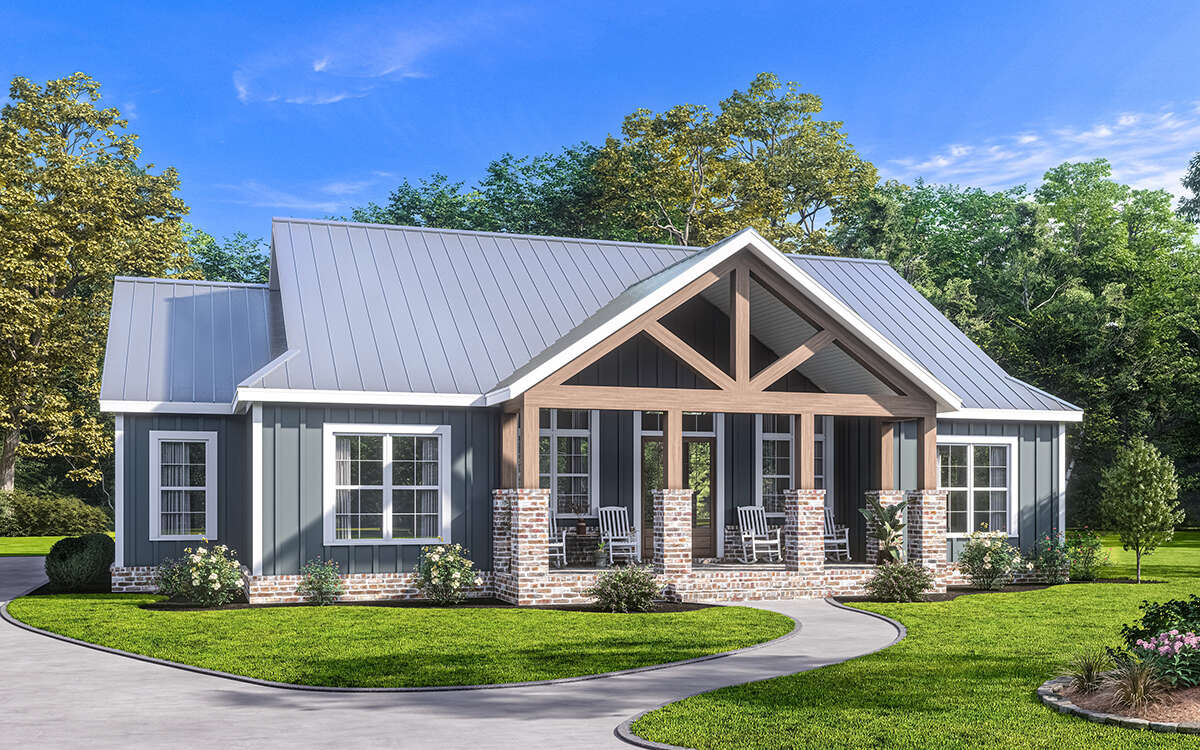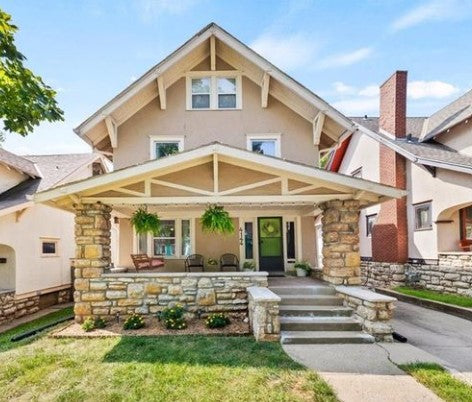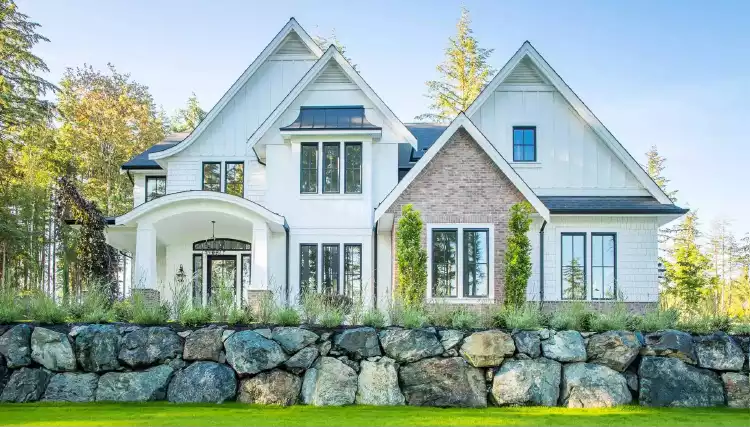Authentic Elements That Define a craftsman style house
The Role of Arts & & Crafts Architects in Elevating Architectural Services in Residential Style
Arts and Crafts architects substantially affect residential design with their commitment to workmanship and sustainability. They focus on handmade information and natural materials, which improve both visual appeals and area identity. By including clients in the style procedure, these architects produce one-of-a-kind home that resonate with individual tastes. This technique questions about the future trajectory of property architecture and its prospective impact on area characteristics. craftsman style house. What exists in advance for this classic style ideology?

The Concepts of Arts and Crafts Architecture
The significance of Arts and Crafts architecture hinges on its dedication to workmanship and simpleness. This building motion arised in the late 19th century as a feedback to automation, highlighting the worth of handcrafted details and all-natural materials. The principles of Arts and Crafts architecture prioritize capability and consistency with the environment. Frameworks generally feature low-pitched roofing systems, large eaves, and revealed rafters, promoting a sense of unity with nature.
Artisans played a substantial role in this style, commonly integrating attractive aspects like discolored glass, floor tiles, and woodwork, which show neighborhood workmanship. The color scheme has a tendency to be natural and restrained, allowing structures to blend perfectly into their environments. Additionally, the layout motivates open layout and communal rooms, promoting a sense of togetherness. On the whole, the principles of Arts and Crafts architecture celebrate the appeal of simplicity and the relevance of human connection to both nature and neighborhood.

Sustainable Practices in Residential Design
While the need for eco responsible living proceeds to grow, lasting practices in property layout have actually gotten considerable traction amongst architects and property owners alike. Architects are significantly integrating energy-efficient innovations and sustainable products into their designs, aiming to decrease carbon impacts and improve power preservation. Methods such as passive solar layout, green roofing systems, and rain harvesting systems are coming to be basic parts of contemporary domestic architecture.
Moreover, the option of locally sourced products decreases transport exhausts and supports local economic climates. Focus on all-natural light and air flow not just boosts indoor air quality however also minimizes reliance on fabricated lights and climate control systems. These sustainable practices mirror a dedication to maintaining the environment while providing house owners with comfortable, efficient space. As awareness of ecological issues expands, the assimilation of sustainability in property style is poised to come to be a defining quality of modern architecture, guided by the principles developed by Arts and Crafts architects.
Personalization and Personalization in Home Style
Modification and customization in home design have arised as essential patterns in feedback to the growing wish for distinct living settings that show specific tastes and way of livings. Homeowners increasingly look for to tailor spaces that resonate with their individual identifications, leading to a much more meaningful connection with their living spaces. craftsman style house. This movement motivates architects to engage customers in the design procedure, cultivating cooperation that assures the last outcome embodies the homeowner's vision
Components such as bespoke designs, customized products, and customized finishes permit a varied series of expressions in property design. Arts and Crafts architects play a crucial function in this advancement, stressing workmanship and high quality. Their concentrate on incorporating creative components with performance guarantees that each home is not just aesthetically pleasing but likewise distinctly matched to the residents' demands. As a result, this focus on personalization boosts the overall property experience, developing rooms that are both personal and long-lasting.

The Impact of Arts and Crafts Architects on Neighborhood Aesthetic Appeals
As communities advance, the impact of Arts and Crafts architects considerably shapes their visual landscape. By emphasizing handcrafted information, all-natural products, and standard construction techniques, investigate this site these architects create homes that reverberate with their environments. Their layouts often incorporate regional plants, structures, and colors, cultivating a sense of consistency in between developed atmospheres and nature.
Moreover, the Arts and Crafts movement promotes community identity via architectural connection. By urging homeowners to embrace similar style principles, neighborhoods establish a cohesive personality that boosts aesthetic allure. This architectural uniformity not only enhances the visual experience but likewise infuses a feeling of pride amongst locals.
The focus on sustainability and workmanship in Arts and Crafts architecture straightens with contemporary worths, making these layouts relevant in modern setups. Inevitably, Arts and Crafts architects contribute substantially to the overall appeal and cultural stability of areas, leaving a lasting influence on their visual heritage.

Future Fads in Arts and Crafts Architecture
With a boosting focus on sustainability and customization, future patterns in Arts and Crafts architecture are poised to mix traditional craftsmanship with modern development - craftsman style house. Architects are most likely to focus on environment-friendly materials, utilizing reclaimed wood and all-natural rock to boost the sustainability of residential layouts. The assimilation of smart home innovation will certainly end up being widespread, permitting personalized living experiences without compromising visual honesty
Additionally, the revival of artisanal methods will certainly foster a renewed admiration for handcrafted components, such as bespoke have a peek at these guys cabinets and custom tile work. Future designs may also show a focus on community-oriented spaces, motivating communication and link amongst locals. Outside living areas will get importance, effortlessly incorporating nature into the home environment. As Arts and Crafts architecture advances, it will remain to recognize its roots while adjusting to contemporary demands, developing harmonious areas that show private worths and lifestyles.
Frequently Asked Questions
What Influenced the Arts and Crafts Motion in Architecture?
The Arts and Crafts activity in architecture was influenced by a response against automation, stressing handmade high quality, natural products, and a go back to conventional craftsmanship, intending to develop unified, practical areas that commemorated virtuosity and originality.
Just how Do Arts and Crafts Architects Collaborate With Customers?
Arts and crafts architects team up with customers with open dialogue, focusing on personal requirements and looks. They emphasize craftsmanship and sustainability, promoting a collaboration that incorporates the client's vision with the designer's know-how in layout and products.
What Products Are Generally Utilized in Arts and Crafts Houses?
Common materials in Arts and Crafts homes include all-natural timber, rock, and brick, stressing craftsmanship and organic aesthetic appeals. These aspects produce a warm, inviting atmosphere, mirroring the motion's devotion to high quality and simpleness in design.
How Do Arts and Crafts Designs Enhance Indoor Living Areas?
Arts and Crafts styles boost check out this site interior home by advertising all-natural light, open layout, and handcrafted information. These aspects cultivate a cozy, welcoming environment, encouraging a connection between residents and their environments with thoughtful, functional looks.
What Are Some Famous Instances of Arts and Crafts Architecture?
Famous examples of Arts and Crafts architecture consist of the Gamble Residence, Greene and Greene's masterpiece in The golden state, and the Robie House by Frank Lloyd Wright. These frameworks showcase handcrafted information and consistency with nature, defining the activity's essence.